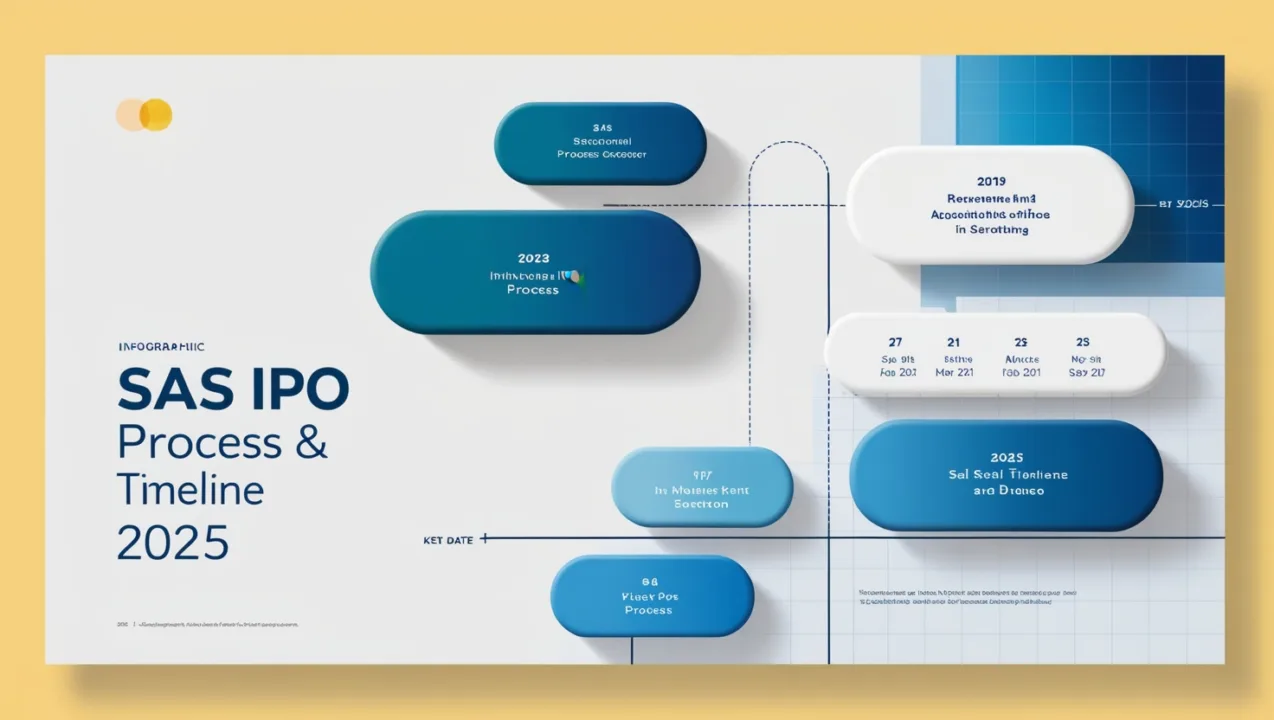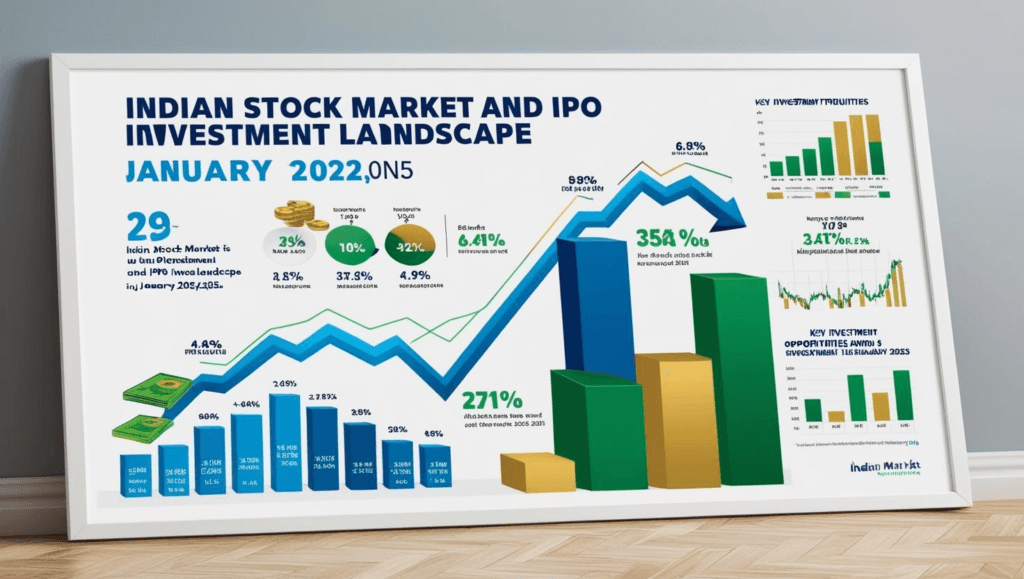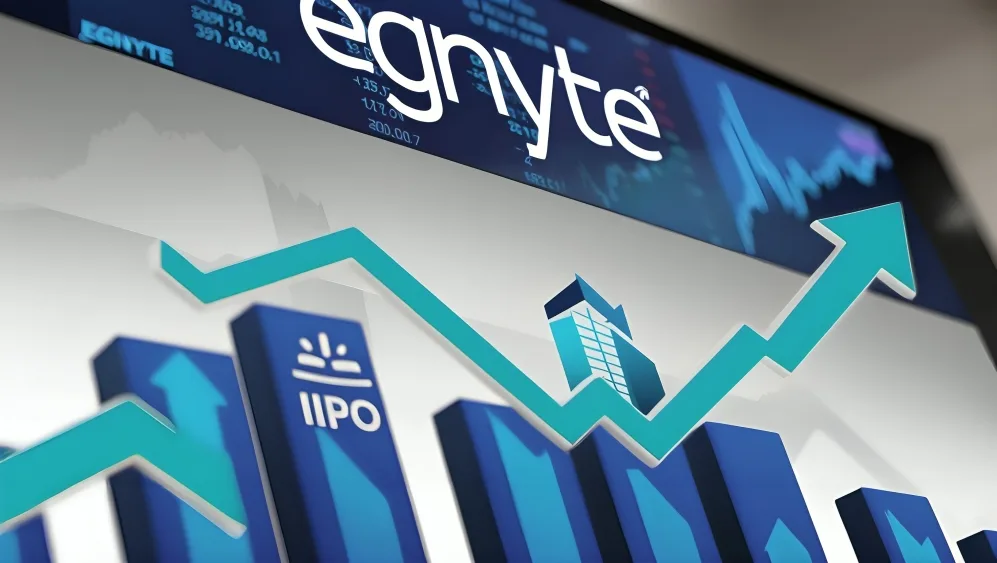A Complete Guide to Understanding IPO GMP and Its Market Impact

IPO GMP (or Grey Market Premium) reflects investor sentiment before a company’s official IPO debut. It shows the difference between the expected issue price and the grey market price, helping investors gauge demand. However, Grey Market Premium is not always a definitive predictor, and other factors must be considered for a more informed decision.
In the world of Initial Public Offerings (IPOs), IPO GMP plays a vital role in determining market confidence before the official listing. It represents the price at which shares of an IPO are traded in the grey market before formal stock exchange listing. Grey Market Premium serves as an unofficial barometer for evaluating investor interest, offering insights into how the stock might perform post-listing. Understanding Grey Market Premium enables investors and analysts to make more informed decisions during the IPO process.
What is IPO GMP?
IPO GMP (Grey Market Premium) refers to the unofficial market price of shares before an IPO is listed on the stock exchange. Unlike the official issue price set by the company, IPO Grey Market Premium reflects investor sentiment and market demand, providing early insight into the potential market behavior of the stock once listed.
Definition of IPO GMP
IPO GMP is the premium or discount at which shares trade in the grey market before an IPO officially hits the stock exchange. For instance, if the issue price is ₹100 and the grey market price is ₹150, the Grey Market Premium is ₹50, indicating strong demand. A negative GMP suggests low demand and market skepticism.
How IPO GMP Works in the Stock Market
IPO GMP influences how an IPO might perform once it is listed:
- Market Sentiment Indicator: A high IPO Grey Market Premium suggests positive market sentiment and strong demand, while a low or negative GMP signals low confidence.
- Price Impact on Listing Day: A higher IPO Grey Market Premium often results in the stock opening higher than the issue price due to high demand.
- Investment Strategy: Investors consider IPO Grey Market Premium to determine whether the IPO is worth investing in, as a higher GMP signals the potential for short-term gains post-listing.
Why is IPO GMP Important?
Role of IPO GMP in Price Discovery
IPO GMP plays a key role in the price discovery process during an Initial Public Offering (IPO). It helps investors gauge market sentiment, offering insights into the likely listing price once the IPO hits the stock exchange. When IPO Grey Market Premium is high, it signals strong demand for the shares, suggesting the listing price may exceed the issue price, thus providing a favorable outlook for investors. Monitoring IPO Grey Market Premium allows investors to assess whether an IPO is underpriced or overpriced, facilitating more informed investment decisions. This market-driven valuation provides an early indication of how the stock might perform after its listing.
The impact of IPO GMP is evident in technology IPOs, where predictive market trends have influenced investor sentiment, such as in the AtomBeam IPO – Price Prediction & Market Analysis, which has gained substantial traction in the market.
How IPO GMP Affects Investor Decisions
IPO GMP significantly influences investor decisions and shapes their strategies for participating in IPOs. When the IPO Grey Market Premium is significantly high, it indicates strong demand in the grey market, signaling potential strong post-listing performance. Investors often look to IPO’s GMP as a barometer to decide whether to apply for the IPO or hold off. A high IPO Grey Market Premium suggests a potential for strong returns, prompting many investors to join in.
Conversely, when an IPO’s GMP is low or negative, investors may feel hesitant due to weak market sentiment, possibly avoiding the IPO or reducing the amount they wish to invest. Understanding IPO Grey Market Premium helps investors adjust their strategies in line with market demand and expected pricing trends, minimizing risk and maximizing returns. Institutional investors and analysts rely on IPO Grey Market Premium to forecast an IPO’s success and build their strategies accordingly, further illustrating the importance of IPO’s GMP in decision-making.
Investors closely monitor IPO GMP to gauge the potential of upcoming listings, such as the Genesys IPO’s Growth Potential, which is expected to skyrocket in 2025.
How is IPO GMP Calculated?
Key Factors Influencing IPO GMP
The IPO GMP (Grey Market Premium) is primarily influenced by several market factors that help determine the potential performance of an IPO in the grey market before it is officially listed. These factors include:
- Market Conditions:
- The overall stock market sentiment plays a significant role in determining the demand for an IPO. If the market is bullish (optimistic), demand for IPO shares is usually higher, which increases IPO Grey Market Premium. Conversely, a bearish market may result in a lower IPO of Grey Market Premium.
- Company Reputation:
- A well-established company with strong financials and a reputable management team often experiences higher demand in the grey market. This higher demand can drive up the IPO Grey Market Premium.
- Sector and Industry Trends:
- The performance of the sector in which the company operates also impacts IPO GMP. For example, tech or pharma IPOs may generate more interest during periods of industry growth, leading to a higher grey market premium.
- Subscription Level:
- The subscription rate during the IPO application process is a critical factor. A highly subscribed IPO often indicates strong market demand, which can push the grey market premium higher. If the IPO is subscribed multiple times over, the premium rises, signaling positive sentiment.
- Market Liquidity and Economic Indicators:
- Broader economic indicators, such as interest rates, inflation rates, and liquidity in the financial system, also play an important role in determining IPO Grey Market Premium. A high liquidity environment can drive up demand and push the grey market premium higher.
Calculating IPO GMP – Simple Examples
IPO GMP Calculation is a subjective process, driven by market expectations, but understanding the basic principles behind it can help investors make better decisions. Here’s how IPO Grey Market Premium is determined in simple terms:
- Find the Issue Price:
- The issue price of the IPO is the price at which the shares are offered to the public. For example, if an IPO’s issue price is set at ₹100, this is the base price.
- Determine Grey Market Price:
- The grey market price is the price at which IPO shares are being traded before the official listing. This can vary based on market sentiment and demand. Suppose the grey market price is ₹150.
- Calculate IPO GMP:
- To calculate IPO Grey Market Premium subtract the issue price from the grey market price.
- IPO Grey Market Premium = Grey Market Price – Issue Price
- For example, if the grey market price is ₹150 and the issue price is ₹100, the IPO Grey Market Premium would be:
- ₹150 – ₹100 = ₹50
This means the IPO’s GMP is ₹50, indicating that traders expect the stock to rise by ₹50 once it is listed on the exchange.
IPO GMP Trends in India
Historical Data of IPO GMP in India
India’s IPO market has experienced several fluctuations over the years, and IPO Grey Market Premium has been a key indicator of investor sentiment. Historically, IPO’s GMP data in India has shown a clear trend of fluctuating premiums based on market conditions and IPO demand. During bull markets, IPO’s GMPs tend to be high, reflecting investor optimism about the IPO’s listing potential. Conversely, during market corrections or bearish trends, IPO Grey Market Premium can dip, signaling skepticism or reduced demand for new listings.
For example, in the 2017-2018 period, several IPOs such as ICICI Securities and HDFC Asset Management saw high GMPs, as the Indian market was experiencing a growth phase, and investors were eager to grab the chance for early gains. On the contrary, the 2019-2020 period saw a drop in IPO GMPs, coinciding with global market uncertainties and a slowdown in the Indian economy.
A chart illustrating historical IPO Grey Market Premium trends could show the rise and fall of GMPs over the past decade, comparing high-profile IPOs and their corresponding GMPs.
Historical Examples:
- ICICI Securities (2018): IPO Grey Market Premium of ₹85-90, reflecting high investor interest.
- HDFC Asset Management (2018): IPO Grey Market Premium of ₹200-210, one of the highest in recent history.
This historical perspective provides context for understanding how IPO’s GMP in India has evolved and highlights the market factors influencing these shifts.
Current IPO GMP Trends in the Indian Market
The current IPO Grey Market Premium trends in India show both optimism and caution in the market. After a slowdown during the COVID-19 pandemic, the Indian IPO market saw a significant revival in 2021 and 2022, with companies like Zomato, Paytm, and NSE making their market debuts. IPO GMPs during this period were often elevated, reflecting investor confidence driven by digital transformation, fintech growth, and post-pandemic recovery.
However, despite the optimism, there is still caution in some quarters. For instance, Zomato’s IPO saw a GMP of ₹50-60 during the pre-market period, but its actual listing price was lower, signaling that market conditions were not as bullish as originally anticipated. Similarly, Paytm’s IPO faced issues with the IPO’s GMP, which remained relatively subdued despite the company’s market potential, indicating market skepticism about tech-heavy valuations.
Recent IPO trends suggest that investor speculation plays a crucial role in GMP fluctuations, as seen with the Boom Supersonic Stock IPO and Market Speculation, where early market interest significantly impacted valuation.
To provide a clearer perspective, here is a comparison table of recent IPO’s GMP values in India:
| IPO Name | Listing Date | IPO GMP (₹) | Listing Performance |
| Zomato | July 2021 | ₹50-60 | Listed at ₹115 (Below Issue Price) |
| Paytm | November 2021 | ₹20-30 | Listed at ₹1,950 (Below Issue Price) |
| NSE | March 2022 | ₹100-120 | Listed at ₹1,700 (At Issue Price) |
| Adani Wilmar | February 2022 | ₹50-60 | Listed at ₹230 (Above Issue Price) |
As the IPO market continues to evolve, IPO Grey Market Premium remains a vital metric for assessing early investor sentiment and overall market health. With sectors like technology, fintech, and green energy gaining traction, future IPO Grey Market Premium trends will likely continue to vary based on broader economic factors and investor confidence.
In summary, while IPO Grey Market Premium remains a critical tool for market participants, it’s important to understand the underlying market conditions that drive these premiums. The current IPO Grey Market Premium trends reflect a mix of optimism in certain sectors, with caution observed in others, signaling the dynamic nature of India’s IPO market.
IPO GMP in the USA: A Comparison
How IPO GMP Differs in the USA
The concept of IPO Grey Market Premium behaves differently in the USA compared to markets like India. In India, IPO Grey Market Premium is widely followed and often provides an early indication of market sentiment and investor interest before the official listing. It’s calculated by comparing the expected IPO price to the grey market price.
However, in the USA, the IPO Grey Market Premium is not as commonly tracked or discussed. The U.S. market tends to focus more on other metrics like pricing ranges and underwriting dynamics, such as the book-building process. The influence of the grey market is less pronounced, and there is a more structured approach to determining IPO prices through official channels.
Key Differences:
- Market Transparency: U.S. markets prioritize official pricing mechanisms, with heavy reliance on institutional investors during the book-building process.
- IPO Sentiment: While Indian IPOs often see significant retail participation, driving IPO GMP discussions, U.S. IPOs have a stronger emphasis on institutional backing and post-listing performance rather than grey market activity.
U.S. IPO Market vs. Indian IPO Market: A Comparison
When comparing the IPO markets of India and the USA, the behavior and impact of IPO Grey Market Premium vary significantly due to different market structures, investor behavior, and regulatory environments.
In the U.S., IPO GMP trends often align with market sentiment for technology firms, as seen in the Netskope IPO – The Future of Cloud Security, which has drawn significant investor attention.
- Retail Investor Influence: In India, retail investors play a huge role in IPOs, and IPO GMP serves as an indicator of demand. High IPO Grey Market Premium in India often signals high investor interest, pushing retail investors to participate. Conversely, in the USA, institutional investors dominate the IPO process, and IPO Grey Market Premium does not serve as an early indication of retail sentiment.
- Market Regulation: U.S. IPOs are heavily regulated with more robust pricing mechanisms before the IPO hits the market. This contrasts with India, where the grey market (or unofficial market) often gives a real-time snapshot of market sentiment, even before the IPO is officially listed.
- Post-Listing Performance: U.S. IPOs are often more focused on the long-term post-listing performance, with institutional investors taking a significant role in determining initial valuations. In India, IPO Grey Market Premium can significantly influence short-term trading activity, as retail investors are more focused on immediate returns.
Comparison Summary:
| Aspect | India | USA |
| IPO GMP Influence | Strong, guides retail investment decisions | Minimal, more focus on institutional pricing |
| Investor Type | Primarily retail investors | Primarily institutional investors |
| Market Focus | Grey market prices provide early market sentiment | Focus on official book-building process and pricing |
| IPO Sentiment | Reflected by IPO GMP, drives retail interest | Driven by institutional support, less influenced by GMP |
| Post-Listing | Retail-driven, often volatile | Institutional focus, more stable post-listing |
By comparing these two markets, it’s clear that while IPO Grey Market Premium is a prominent tool in India, it plays a much less significant role in the U.S. IPO market, where institutional forces and official pricing mechanisms govern the process more than the grey market does.
How to Use IPO GMP to Your Advantage?
IPO Grey Market Premium can offer investors crucial insights when making decisions about investing in upcoming IPOs. By carefully monitoring the IPO GMP and understanding its trends, investors can enhance their strategies. Below, we dive into how IPO Grey Market Premium can be used effectively for trading and its associated risks and rewards.
IPO GMP as a Trading Strategy
IPO GMP plays a key role in the IPO market sentiment and can provide valuable insights into how an IPO might perform post-launch. Here’s how investors can use IPO Grey Market Premium as part of their trading strategy:
A strong IPO GMP can indicate a high demand for shares before listing, similar to the excitement around the 89bio IPO – A Promising Investment Opportunity, which attracted significant investor interest.
1. Pre-IPO Buying Decisions
Investors often look at the IPO”s GMP to gauge the initial demand for an IPO. A higher GMP suggests greater demand in the grey market, indicating that the IPO might perform well when listed. Traders can use this information to decide if they want to participate in the subscription process, betting on a profitable listing day.
2. Post-IPO Trading
After the stock goes public, IPO’s GMP can help determine the potential profitability of a stock in the initial days. If the GMP is high before listing, traders may choose to sell the stock as soon as it lists at a premium. By closely monitoring market signals such as GMP trends, investors can sell their shares at a peak price to capitalize on initial gains.
3. Short-Term vs. Long-Term Strategy
While short-term traders can profit from volatility driven by IPO GMP, long-term investors might want to focus on the underlying fundamentals of the IPO instead of relying solely on grey market premium signals.
Example Chart: Grey Market Premium Trends vs. Stock Performance
| IPO | IPO GMP | Market Reaction on Listing | Profit/Loss |
| XYZ Ltd. (2023) | ₹250 | List at ₹270 | +8% |
| ABC Tech (2024) | ₹100 | List at ₹120 | +20% |
Risks and Rewards of IPO GMP
Using IPO Grey Market Premium as an investment indicator comes with both risks and rewards that investors should carefully weigh before diving in.
Risks:
- Volatility in Grey Market IPO’s GMP can fluctuate significantly, and a sudden drop in the grey market price can signal a poor IPO performance on listing day. This volatility means short-term profits are not guaranteed and may result in losses if the market sentiment changes unexpectedly.
- False Indications A high IPO Grey Market Premium might not always translate into a successful listing. In some cases, overhyped stocks may fail to meet investor expectations once listed. IPO’s GMP is an indicator, but it should not be used as the sole decision-making factor.
- Manipulation in the Grey Market Since IPO Grey Market Premium operates in the grey market, it’s susceptible to manipulation. Certain traders or groups might create an artificial demand, driving up the GMP without reflecting the true sentiment. This could mislead investors into making uninformed decisions.
Rewards:
- Quick Profits A strong IPO’s GMP generally indicates strong market demand, and investors who act quickly on this information may enjoy substantial short-term profits when the stock lists are at a premium.
- Informed Decision-Making By integrating IPO Grey Market Premium with other market indicators, investors can refine their strategies and make more informed decisions about which IPOs to participate in. Combining fundamental analysis with IPO GMP gives a broader understanding of the market outlook.
- Lower Risk of Loss If used carefully, IPO Grey Market Premium helps identify undervalued or overvalued IPOs, lowering the overall risk of investing in IPOs with uncertain outcomes. By following trends and not relying solely on GMP, investors can better hedge against potential losses.
By effectively combining IPO’s GMP with other market data, investors can leverage its trends to maximize gains while managing risk. However, caution is key IPO Grey Market Premium should be just one of many tools used in formulating a diversified trading strategy.
For more detailed information on IPO trends and investing in IPOs, you can refer to Chittorgarh for their comprehensive resources.
Common Myths About IPO GMP
IPO GMP (Grey Market Premium) is often surrounded by several misconceptions that can mislead both novice and experienced investors. Let’s debunk some of the most common myths associated with it.
Debunking Common Misconceptions
Myth 1: High IPO GMP Means Guaranteed Profits
Many investors believe that a high IPO’s GMP means a sure-shot profit once the shares are listed. However, this isn’t always the case. While a strong GMP may indicate high demand, it does not guarantee that the stock will perform well once it enters the public market. The grey market can sometimes be influenced by speculation, and external market factors can drastically affect the performance post-listing.
Myth 2: IPO GMP Reflects the Exact Listing Price
Another common misconception is that the IPO’s GMP gives an accurate picture of the listing price. However, the listing price is determined by several factors, including market conditions and the demand for the stock at the time of the IPO’s launch. The GMP reflects speculative buying, which may not necessarily align with the final listing price.
Myth 3: IPO GMP is Only Useful for Short-Term Traders
Some believe that IPO’s GMP is only useful for short-term traders or those looking to flip IPO stocks for immediate gains. While GMP can be helpful for traders looking for quick profits, it can also provide valuable insights for long-term investors. A high GMP might suggest strong market confidence, which can be useful for those looking to hold stocks over the long run.
Myth 4: A Low IPO GMP Means the IPO is a Bad Investment
A low or negative IPO’s GMP does not necessarily mean the IPO is a bad investment. While a low GMP may indicate lukewarm demand in the grey market, it doesn’t account for other important factors like the company’s fundamentals, growth prospects, and industry trends. It’s essential to consider the full picture before making investment decisions based solely on GMP.
Myth 5: IPO GMP Can Predict Post-Listing Performance
IPO GMP is based on market speculation and sentiment, but it doesn’t always reflect a stock’s performance after it is listed. Factors such as market volatility, investor perception, and broader economic conditions play a significant role in post-listing performance.
Why IPO GMP is Not a Guarantee for Success
While IPO GMP can provide valuable information, it should never be treated as a guarantee of success for the IPO. There are several reasons why IPO Grey Market Premium doesn’t always correlate with post-listing performance:
- Market Sentiment vs. Fundamental Value
IPO Grey Market Premium is driven largely by market sentiment in the grey market, which is speculative. However, the stock’s long-term value depends on its underlying fundamentals: financial health, growth prospects, and management quality. A stock with a high GMP might be overhyped, leading to a price correction after listing. - External Market Influences
Even if a stock has a high GMP, it can still perform poorly if there is an adverse change in the market or economy. Factors like global economic events, interest rates, or a downturn in the sector the company belongs to can cause the stock’s price to fall, despite an initial high premium. - Over-Speculation
The grey market often experiences over-speculation, where the price is driven up by early traders betting on quick profits. When the IPO is listed, the stock price might be correct, especially if the demand does not align with speculative expectations. IPO GMP is often more volatile than the stock’s true market value, making it an unreliable indicator of success. - Mismatch Between GMP and IPO Pricing
Sometimes, the IPO’s GMP doesn’t reflect the final pricing of the IPO, which is often set by the company and underwriters. If the stock’s listing price is set below the grey market price, the stock may not be able to sustain the premium in the public market, leading to a fall in price after listing. - Lack of Post-Listing Information
In many cases, IPO GMP does not account for post-listing company performance. After an IPO, companies face scrutiny from analysts, institutional investors, and the market as a whole, which can lead to significant price fluctuations that GMP does not predict.
Conclusion
In conclusion, while IPO GMP can offer insights into market sentiment, it should not be the sole factor when deciding to invest in an IPO. Investors should conduct a more comprehensive analysis, considering not only GMP but also company fundamentals, industry trends, and broader market conditions. IPO Grey Market Premium is useful, but it’s not a guarantee for success.
Conclusion – IPO GMP and Its Future
The Evolving Role of IPO GMP in Global Markets
IPO GMP has evolved as a crucial indicator in the world of IPOs, particularly in emerging markets. Traditionally used to gauge the market sentiment before an IPO, its significance has grown as more investors rely on it to forecast IPO success. In global markets, especially in India and the U.S., IPO Grey Market Premium provides valuable insights into investor confidence. As IPO markets continue to diversify, the role of IPO Grey Market Premium in guiding price discovery and investor decisions is expected to expand further, making it an essential tool for both individual and institutional investors.
How Investors Can Make the Most of IPO GMP
Investors can leverage IPO Grey Market Premium to make more informed decisions during an IPO’s pre-listing phase. By monitoring the GMP trends, they can gauge the potential for price appreciation or underpricing once the stock hits the market. A rising GMP indicates strong demand, while a falling GMP signals skepticism about the stock’s future performance. To maximize returns, investors should combine IPO Grey Market Premium with other fundamental analyses and stay updated on the market environment. Being cautious and not solely relying on IPO Grey Market Premium is key to managing risks in the volatile IPO market.
FAQ
How true is GMP for IPO?
GMP is a helpful indicator of market sentiment but doesn’t guarantee the final IPO listing price. It should be used in combination with fundamental analysis and market conditions for better accuracy.
How to know GMP of IPO?
To track IPO GMP, investors rely on grey market dealers or platforms that update prices regularly. Always cross-check multiple sources to ensure data accuracy.
Is GMP always right?
No, GMP is not always accurate. It indicates market sentiment, but unexpected events can still affect the final listing price, so it’s only a temporary measure.
आईपीओ के लिए जीएमपी कितना सही है?
आईपीओ जीएमपी केवल बाजार की भावना को दर्शाता है और यह सही परिणाम की गारंटी नहीं देता। जीएमपी में बदलाव कंपनी के बाजार परिदृश्य के अनुसार हो सकता है, और इसे अकेले निर्णय लेने के लिए नहीं इस्तेमाल किया जाना चाहिए।
Disclaimer
The information provided in this article is for informational and educational purposes only. It does not constitute financial, investment, or legal advice. While we strive to ensure accuracy, we do not guarantee the completeness or reliability of the content.
Investing in IPOs, Grey Market Premium (GMP), or any stock market instruments involves risks, and past performance is not indicative of future results. Readers are encouraged to conduct their own research and consult with a certified financial advisor before making any investment decisions.
We are not responsible for any financial losses, legal issues, or investment decisions made based on the information provided in this article. Market conditions fluctuate, and IPO GMP values may change rapidly, making predictions uncertain.
By using this content, you acknowledge and agree that we are not liable for any financial consequences resulting from your investment choices. Always make informed decisions based on credible financial analysis and expert consultation.







